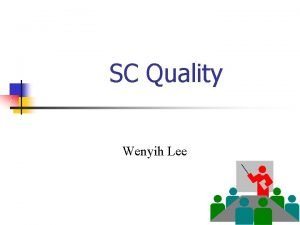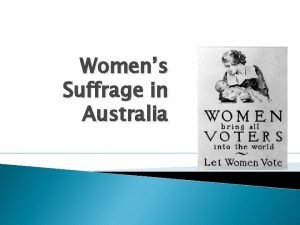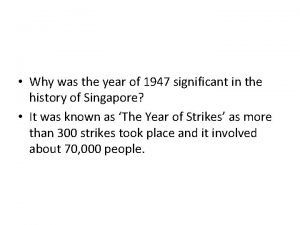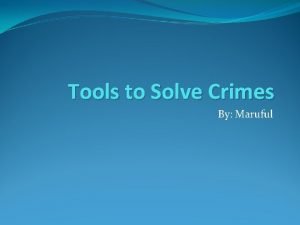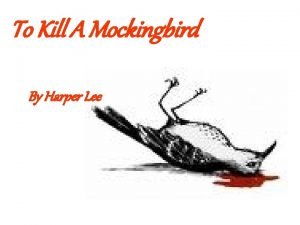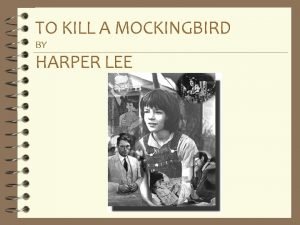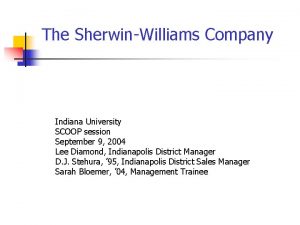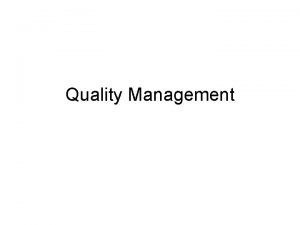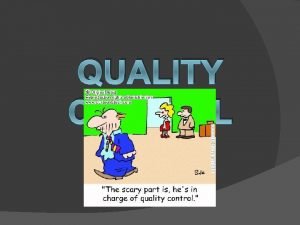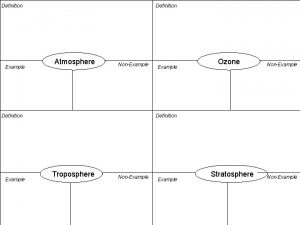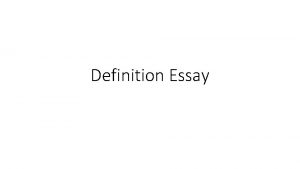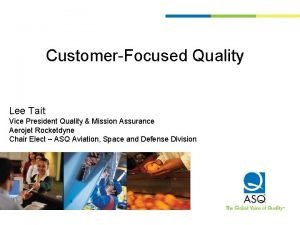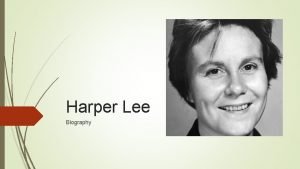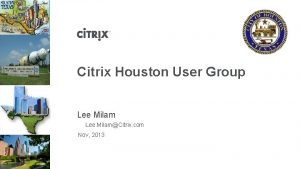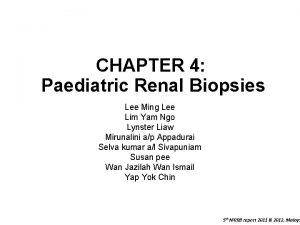SC Quality Wenyih Lee Definition of Quality 1






















- Slides: 22

SC Quality Wenyih Lee

Definition of Quality: 1. Juran (1974): Quality is fitness for use 2. Crosby (1979): Quality is conformance to requirements or specifications 3. Taguchi (1979): Quality is the losses of society caused by the product after its delivery 2

Definition of Quality (cont. ): 4. Deming (1982): Quality is “a predictable degree of uniformity and dependability, at low cost and suited to the market. ” 5. Garvin (1984) -- Eight dimensions of quality: performance, feature, reliability, conformance, durability, serviceability, aesthetics, perception 3

GAO TQM Model Reliability Product and service quality On-time delivery Error/defects Leadership for continuous improvement Quality systems and employee involvement Overall satisfaction Customer retention Complaints Competitiveness Market share Profits Organization benefits Costs Cycle time Turnover Satisfaction Safety & health Productivity 4

KSF of Quality Management Top Management Commitment Base decisions on fact Focus on Process Focus on Customers Improve Continuously Let everybody be committed 5

Concepts of QM 1. System Problems (85%) 2. Individual Problems (15%) “ 15% of all quality problems are related to a particular worker or tool. The other 85% arise from faults in the company’s system and will continue until that system is changed. ” W. Edwards Deming 6

Customers: 1. Internal customers 2. External customers The next process is your customer. 7

ISO (International Organization for Standardization) “The basis of a quality system is to say what you do, do what you say, record what you did, check the results, and act on the difference. ” By Ian Durand 8

ISO Define WHAT will be done WHY Policy Procedures WHO ISO 9001 ISO 14001 ISO 18001 WHEN WHERE HOW Work Instructions Evidence Records The documentation pyramid 9

Are they just slogans? n n n “ Do right things” and “Do things right” Zero defects Quality is free CQI Do it right the first time. Do it very right the second time. …. 10

PDCA Cycle: The Deming Wheel Action Plan Check Do Q U A L I T Y 11

Benchmarking “Benchmarking is measuring performance against that of best-in-class organizations, determining how the best in class achieve those performance levels, and using the information as the basis for goals, strategies, and implementation. ” – Prysor (1989) Benchmarking Procedures: 1. 2. 3. 4. 5. 6. Decide what to benchmark Understand current performance Plan Study others Learn from the data Use the findings 12

Costs of Quality $ 13

Toyota halts U. S. sales for 8 models* for faulty pedals. Sticking accelerator problem affects top -selling Camry; production stopped at 5 plants. January 27, 2010 *RAV 4, Corolla, Camry, Matrix, Avalon, Highlander, Tundra, and Sequola

Before UCL CL LCL Improving Costs After Time 15

Hierarchy of Quality: Design of Experiments Statistical Process Control Inspections 16

17

Differences in the Manufacturing and Service Sectors Manufacturing Service n Product is tangible. n n Back orders are possible. n Producer or company is the only party involved in the making of the product. Product can be resold. Customer usually provides formal specifications for the product. Customer acceptance of the product is easily quantifiable. Ownership of a product changes hands at a specific point in time. n n n n n Service consists of tangible and intangible components. Service cannot be stored: if not used, they are lost. Producer and consumer are both involved in the delivery of the service. Service cannot be resold. Formal specification need not be provided by the consumer. Customer satisfaction is difficulty to quantify. Rendering of a service takes place over an interval of time. 18

Service Quality Gap Model Word-of-mouth communication Personal needs Past experience Expected service Customer Gap 5 Perceived service Marketer Gap 1 Service delivery (including pre and post-contact External communication to consumers Gap 4 Gap 3 Translation of perceptions into service quality specification Gap 2 Management perceptions of consumer expectations Resource: Zeithaml et al. , 1988, “Communication and Control Processes in the Delivery of Service Quality, ” Journal of Marketing, Vol. 52, p. 36. 19

The First and Second Laws of Service -- (The psychology of waiting line) Customer Satisfaction (t) = Perception (t) – Expectation (t) It’s hard to play catch-up ball 20

What is the relationship between customer satisfaction & quality level? Customer Satisfaction (+) Quality (+) (-) 21

What is the relationship between customer satisfaction and loyalty? 1. 0 Loyalty = 0. 8 Repurchasing 0. 6 0. 4 0. 2 0 1 2 3 4 5 Customer Satisfaction 22
 Quality lee
Quality lee Quality gurus meaning
Quality gurus meaning Placidly in to kill a mockingbird
Placidly in to kill a mockingbird Quality control and quality assurance
Quality control and quality assurance Project quality management pmp
Project quality management pmp Pmp gold plating
Pmp gold plating Quality assurance model in nursing
Quality assurance model in nursing Compliance vs quality
Compliance vs quality Basic concept of quality management
Basic concept of quality management Crosby's fourteen steps to quality improvement
Crosby's fourteen steps to quality improvement What is tqm
What is tqm Hitman lee pokemon
Hitman lee pokemon Mary lee timeline
Mary lee timeline 2005-1947
2005-1947 Lee vor luv beispiele
Lee vor luv beispiele Onel de guzman
Onel de guzman Roy kenshin lee
Roy kenshin lee To kill a mocking bird chapter 1
To kill a mocking bird chapter 1 Harper lee timeline
Harper lee timeline Mockingbird genre
Mockingbird genre To kill a mockingbird biography
To kill a mockingbird biography Who was janie's grandfather
Who was janie's grandfather Lee diamond sherwin williams
Lee diamond sherwin williams
